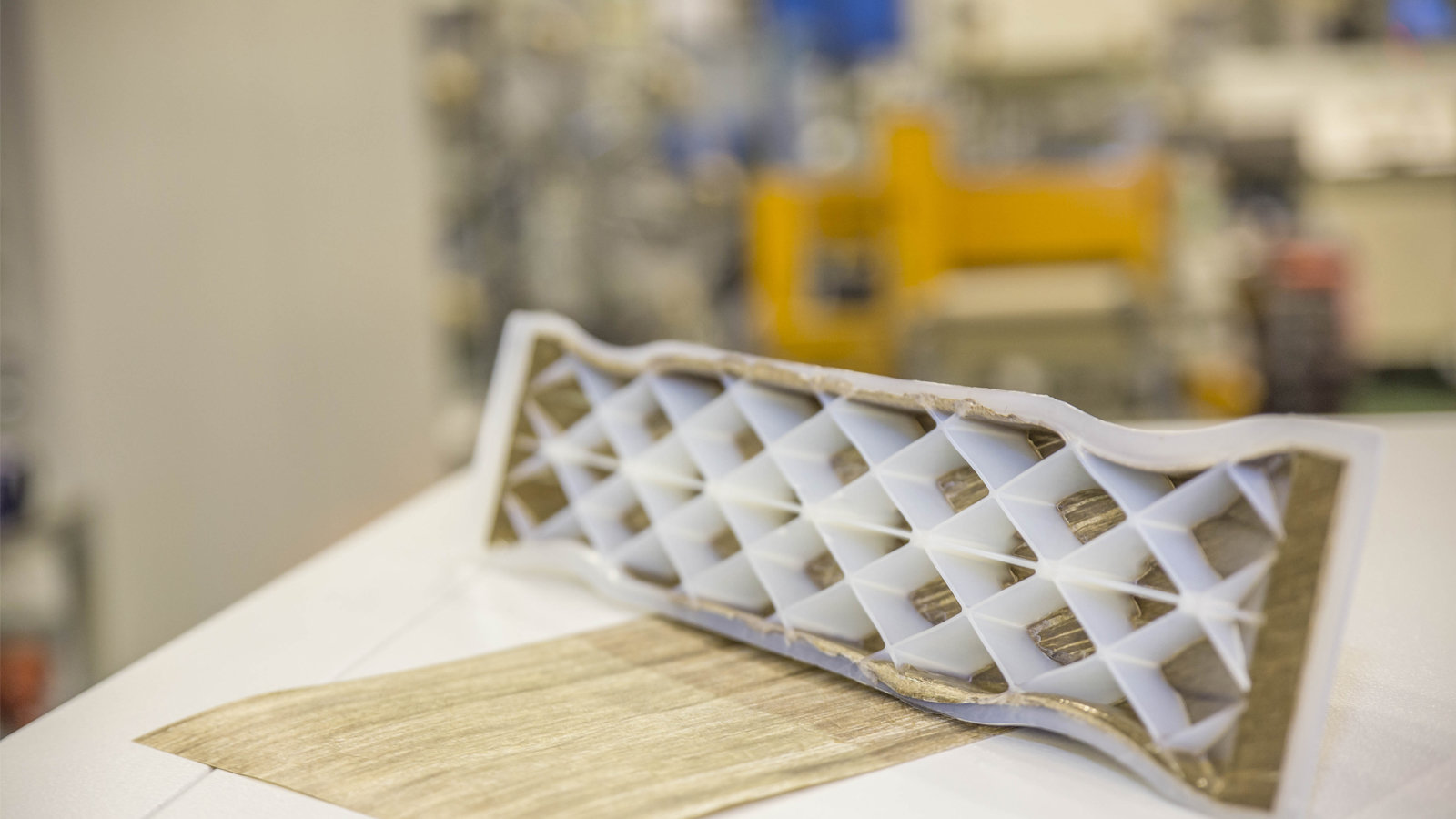
Researchers from Chemnitz University of Technology in Germany have developed a range of bio-based fiber-plastic-compounds that could be produced on a large scale as an alternative to glass and carbon fiber reinforced plastics.
‘We replace the glass or carbon fiber with natural fibers such as flax,’ said Ahmed-Amine Ouali, research associate at the Institute of Lightweight Structures. ‘Our plastic matrix is a biopolymer of renewable resources. Thus, the carbon footprint in the product’s life cycle is significantly better.’ The use of continuous filaments renders the compound extremely stiff and highly rigid in the direction of the fibers, the researchers say.
The researchers’ main objective was to develop a procedure with which the semi-finished products made from plastics and natural fibers can be produced on large-scale. Film-stacking-technology is currently common practice. In this procedure, single layers (for example plastic-film plus non-crimp-fabric plus plastic-film) are stacked into a heat press, fused under pressure, removed and further processed into plates in another machine. For the continuous procedure the MERGE researcher had to design a new calender. ‘Natural fibers have a special characteristic in contrast to glass or carbon fibers: they readily absorb fluids. Thus, prior to the processing they have to dry,’ said Ouali. ‘At the institute we developed a dryer plant that can be attached to the calender almost without space in between. This way the dried fiber has almost no contact to the moist ambient air.’
The Omega-calender consists of several cylinders through which the flax-fiber- plastic-films can theoretically be led continuously, heated up, and pressed together. After the impregnation process and the cooling of the thermoplastic prepregs the fiber-matrix-semi-finished product is complete. It is wound up on a role and can be further processed in various ways, by cutting to size with numerous layers pressed as a stack a rigid plate emerges. ‘We can also form the semi-finished product once more and combine it with injection molded products,’ said Ouali.
The production procedure is currently intermittent, with a stop after the continuous production of the prepreg-semi-finished product. Depending on the need the production then continues in numerous different plants. Yet, with regard to large-scale production, the manufacturing path can be supplemented or combined accordingly, the researchers say.
‘We will further experiment with various fiber structures as knitted or non-crimp fabrics, or in other forms and with different matrix combinations for example films or spun-bonded fabric,’ said Ouali.
This story is reprinted from material from Chemnitz University, with editorial changes made by Materials Today. The views expressed in this article do not necessarily represent those of Elsevier.






